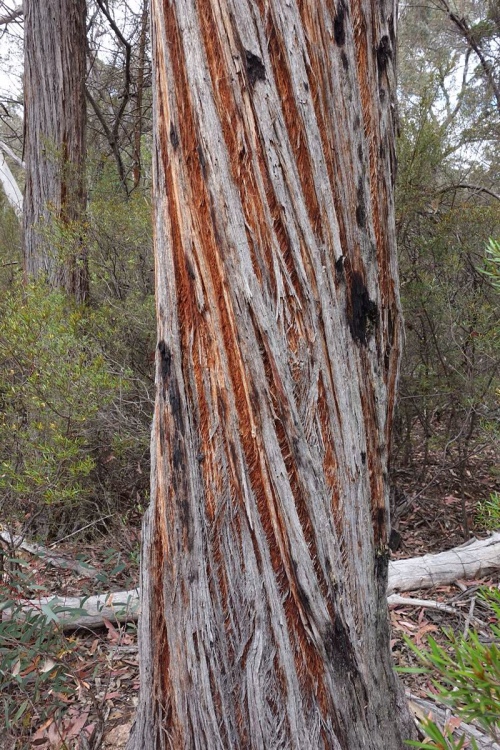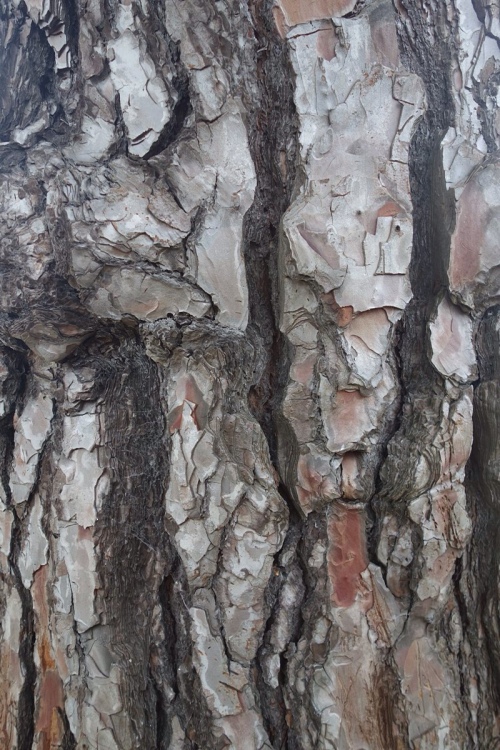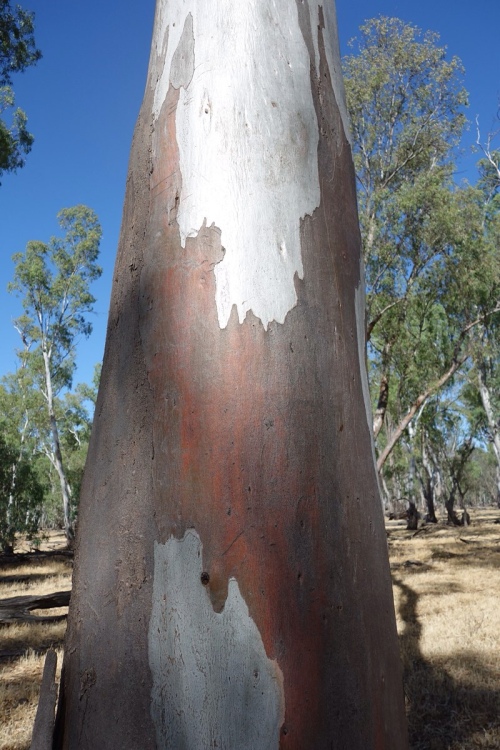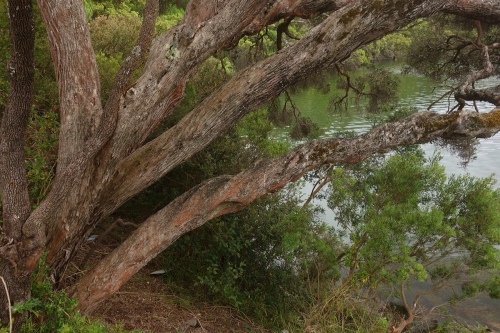Tags
To dwellers in a wood, almost every species of tree has its voice as well as its feature.
I am not a “dweller in a wood”, but I am a walker in the bush, and to me too every tree has its voice and its feature. Casuarinas speak in the wind, almost like the murmur of human voices. The trunks of eucalypts creak against each other. Wattles choose to converse in heady perfume; bottlebrush in the multitudinous voices of parrots and honeyeaters.
Trunks split to reveal creams, russets, browns and blue, especially under the influence of rain
bulge out in intricate carbuncles
create patterns of sublime subtlety over their musculature
present designs like subdued Matisse cut outs
and tesselate.
Their roots break pavements and gather sun-mottles.
Their bark peels in rich strips
and they blush as they excoriate.
Brown, they lean over green foliage and water
Tall and silvery-skinned, they reach for the sky in the morning light.
They tell their history, not only in their precisely accurate rings of bark which record the quality of seasons as well as the passing of years, but also in fire scars
and the only-recently-deciphered tracks of moth larvae.
Moth larvae postscript: I mentioned these tracks in a previous post, unscientifically hidden in a haiku. My indefatigable friend, Prue, sent me links to some remarkable research by Dr Max Day, recently turned 100, and a number of other retired scientists. Dr Day's most recent paper was published when he was 97. The articles are well worth reading.
http://theconversation.com/unravelling-the-mystery-of-eucalypt-scribbles-11023
http://www.ecosmagazine.com/print/EC12497.htm
The quote at the beginning of this post is from Thomas Hardy's “Under the greenwood tree”

















The character of all these trees shines through with your descriptive words Meg. I love our Aussie trees and your photos are superb. I am struggling to keep up with my blogging friends at the moment as my days are rather full and by the time we have had a late dinner. (evening is the coolest time to be out in the garden) I can hardly keep my eyes open. But I wish you a happy Christmas and hope to be able to visit more often in January.
LikeLike
Thanks for good wishes – and the same to you. It sounds as if you’re kept very busy: I spent the last two hot afternoons lolling in the river. Should I feel guilty?
LikeLike
Definitely not guilty Meg,the only place to be lolling at this time of the year and in these temperatures, enjoy it to the fullest.
LikeLike
I never used to take much notice of trees, Meg, but now that I have a treeaholic to inspire me I take much more notice. I especially love that last shot. 🙂
LikeLike
Glad to make a convert on behalf of trees!
LikeLiked by 1 person
Lovely tree shots Meg. I first saw the ‘scribble’ trees in Canberra. And then slug trails in Dee Why!
LikeLike
Slug trails?
LikeLike
LikeLike
Your first photo looks like rock rather than a tree and the second, well I’ve never seen such a multi eyed tree person! I love the scribbles, they are so inspiring and slightly neater than my handwriting. Thanks for the links, they are interesting and the Judith Wright poem is great. I first saw this post last night, but not the articles, and I thought of writing a poem about them myself.
LikeLike
Write that poem! I love your poems.
(As an aside, my grandson won his school’s Judith Wright bursary for his poem(s). She lived for many years near Mt Tamborine.)
LikeLiked by 1 person
How wonderful, will he let you share one? I may just try a poem when time allows 🙂
LikeLike
He’s due here next week. I’ll ask him.
LikeLike
Love this one Meg. Actually, you are almost a “dweller in a wood”, given the thicket of trees in your front yard close to the house from which a cacophony of bird sounds greets the house’s occupants every morning. One of the many joys of visiting you.
LikeLike
And my Bolwarra is flowering, with its slightly rotten perfume.
LikeLike
Can you take any photos of the Bolwarra blooms? It is a rainforest tree, is it not?
LikeLike
It is indeed, part of J’s planting in the rainforest phase. The mutton wood in the backyard is doing some amazing stem flowering too. I only noticed because I need some felling and I was wandering round with the arborist.
LikeLike
A fine eulogy to tree life, Meg. Especially like ‘silvery-skinned’. Also the larval ‘scribble’ which definitely looks like a secret message – moth runes.
LikeLiked by 1 person
And I would second that comment, Tish!
LikeLiked by 2 people
I love “moth runes”.
LikeLike